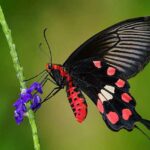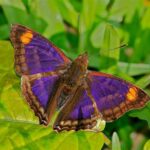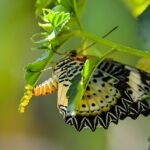In the world of butterflies, the color blue resonates with the tranquility of the sky and the serenity of the ocean. Blue butterflies are not just another hue in the kaleidoscope of nature; they are flying jewels, adorning gardens and forests with their ethereal presence.
Their delicate wings, ranging from sky blue to deep indigo, are nature’s canvases, illustrating the artistry of evolution. But are these blue butterflies widespread, or are they a rare spectacle?
Let’s unfurl the wings of curiosity and embark on a journey through the enchanting world of blue butterflies.
Are Blue Butterflies Real?
Yes, blue butterflies are very much real and are a mesmerizing sight to behold. They belong to the Lycaenidae family, known for their vibrant colors and striking patterns.
The blue in their wings doesn’t stem from pigments but from microscopic structures that reflect light, creating their signature iridescent blue hue.
This phenomenon, known as structural coloration, causes their mesmerizing color to shift in intensity and hue when viewed from different angles.
1. Blue Morpho Butterfly
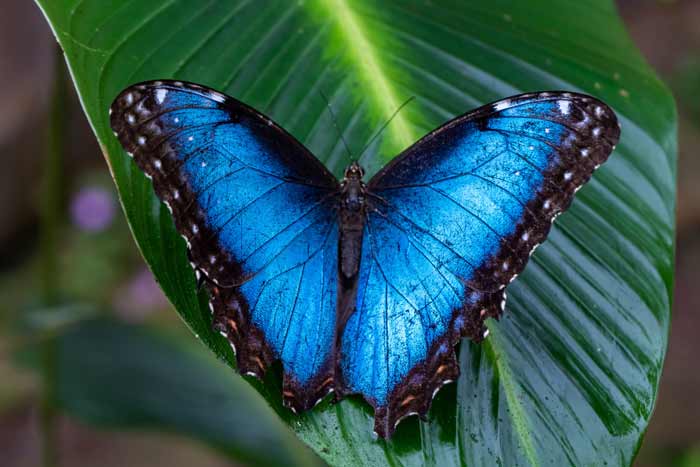
The Blue Morpho Butterfly is a breathtaking spectacle in the natural world, renowned for its iridescent blue wings that captivate observers with their brilliance. With a generous wingspan reaching up to 8 inches, it’s one of the largest butterflies known.
These majestic creatures predominantly inhabit the lush, tropical rainforests of Latin America, where they flutter gracefully through the understory.
Fact: The Blue Morpho’s striking color isn’t due to any pigment but is an optical illusion created by the microscopic scales on their wings, which reflect light.
2. Karner Blue Butterfly

The Karner Blue Butterfly may be diminutive, but it’s a true beauty. With a wingspan of only about an inch, these butterflies are known for their vibrant blue coloration, which is especially prominent in males.
They are native to the northeastern United States, thriving in areas rich with wild blue lupine flowers, their larvae’s sole food source.
Fact: The Karner Blue Butterfly is an endangered species, with conservation efforts in place to protect its unique habitat and promote the growth of blue lupine flowers.
3. Common Blue Butterfly

The Common Blue Butterfly is a delightful presence in various habitats across Europe. Males are easily recognizable by their vivid blue wings, while females feature a more subdued blue-grey hue. They have a wingspan of approximately 1.3 to 1.7 inches, making them a medium-sized butterfly. These butterflies are versatile and adaptable, found in places ranging from meadows to woodland clearings.
Fact: The Common Blue Butterfly is known for its territorial tendencies, with males often seen defending their chosen patches from rivals.
4. Eastern Tailed-Blue Butterfly
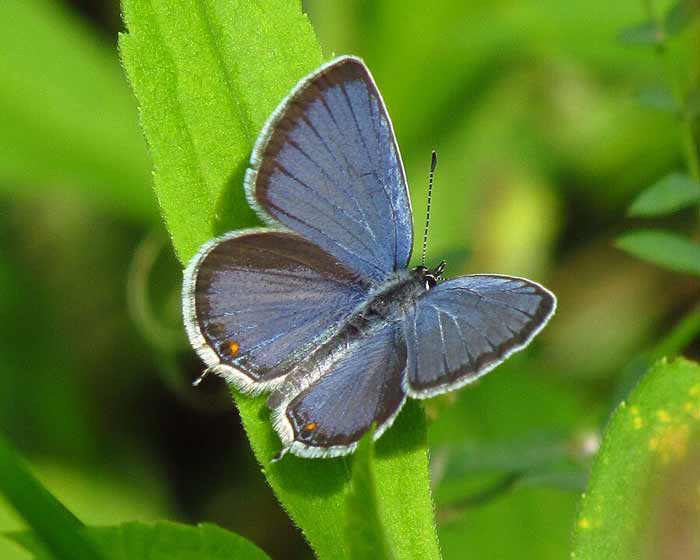
The Eastern Tailed-Blue Butterfly is a charming species with a small stature, boasting a wingspan of only 0.75 to 1.25 inches. Males are known for their vivid blue topsides, while females feature a more subdued blue-grey. They are widespread across North America and are often spotted in meadows, parks, and gardens.
Fact: This butterfly’s name stems from the small, tail-like projections on its hindwings, which can confuse predators into attacking the rear of the butterfly instead of the head, allowing it to escape in the opposite direction.
5. Holly Blue Butterfly
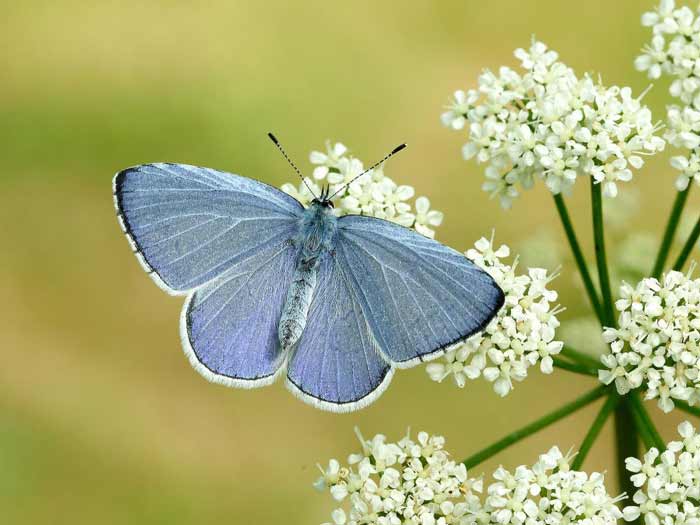
The Holly Blue Butterfly is recognized for its pale, silvery-blue wings that glisten in the sunlight. With a wingspan of around 1.4 inches, it’s a small species found across Eurasia. This butterfly has a particular affinity for holly bushes, hence its name.
Fact: The Holly Blue’s populations undergo significant fluctuations, partly due to its parasitic relationship with a specific wasp species that preys on its larvae.
6. Adonis Blue Butterfly
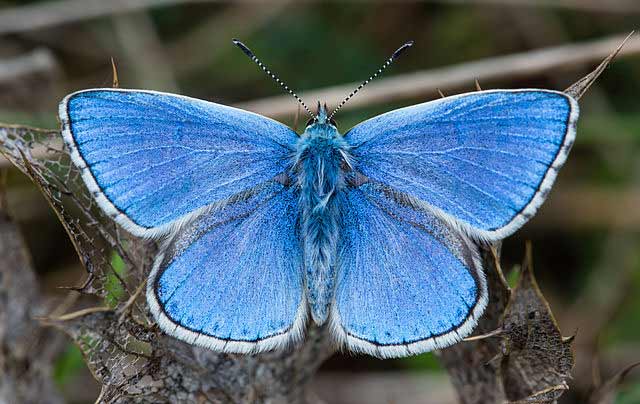
The Adonis Blue Butterfly is a radiant species, with males displaying bright blue wings and females showing brown with blue margins. They have a wingspan of about 1.4 inches and are primarily found in the chalky grasslands of Europe.
Fact: The caterpillars of the Adonis Blue have a mutualistic relationship with certain ant species, offering them sugary secretions in return for protection.
7. Zebra Blue Butterfly
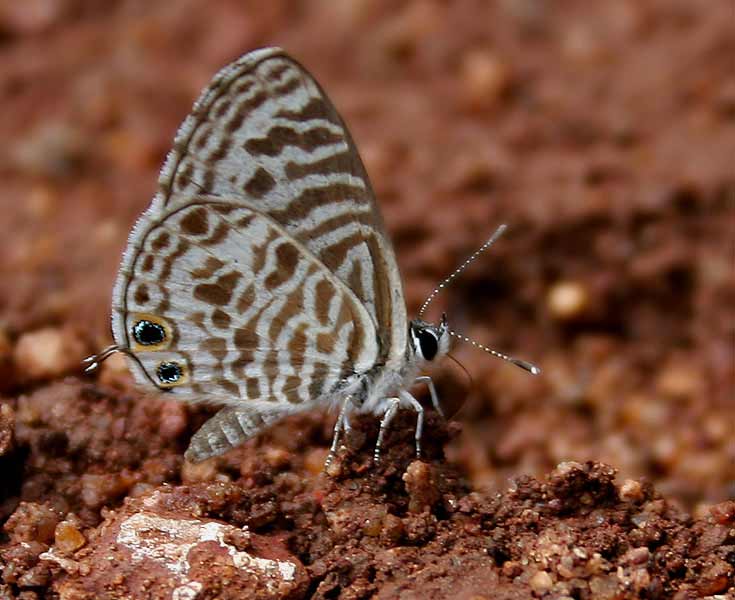
The Zebra Blue Butterfly, with its distinctive zebra-like stripes, is a small butterfly with a wingspan of just over an inch. It’s commonly found in hot, dry habitats in Asia and Australia.
Fact: Despite its small size, the Zebra Blue is a strong flier, and males are known to engage in vigorous aerial battles for territory.
8. Spring Azure Butterfly
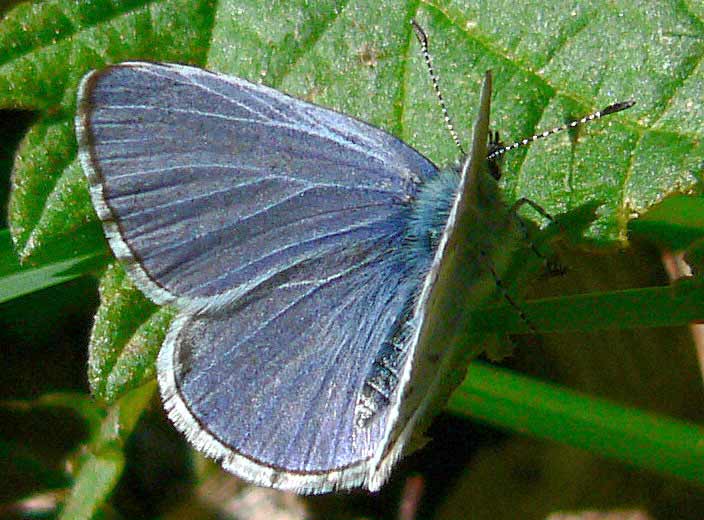
The Spring Azure Butterfly is a North American native, sporting pale blue wings with a wingspan of about 1 inch. They are versatile and inhabit a variety of environments from forests to meadows.
Fact: The Spring Azure exhibits a form of seasonal dimorphism, where their physical appearance changes between spring and summer broods, often leading to confusion with other species.
9. Silvery Blue Butterfly

The Silvery Blue Butterfly features lovely silvery-blue wings marked with white and brown. Their wingspan ranges from 1 to 1.25 inches, and they are prevalent in North America, often seen in open, sunny areas.
Fact: Their caterpillars have a fondness for legumes, especially the flowers and fruits, and are known to feed on several types of wild peas.
10. Mazarine Blue Butterfly
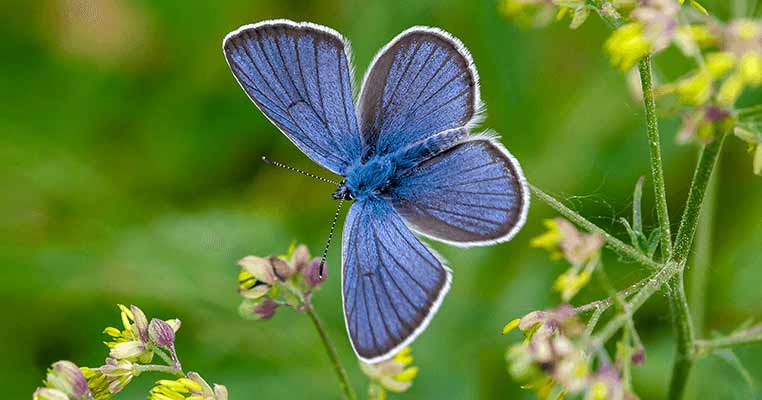
The Mazarine Blue Butterfly is known for its striking deep blue wings, edged with black. With a wingspan of 1.3 to 1.7 inches, this species is found across Europe and Asia and prefers meadows and grassy areas.
Fact: The Mazarine Blue is migratory, with populations traveling considerable distances during the breeding season, a somewhat unusual behavior among butterflies.
11. Chalkhill Blue Butterfly

The Chalkhill Blue Butterfly sports powdery blue wings and prefers chalk and limestone grasslands. Found primarily in Europe, they have a wingspan of about 1.4 inches.
Fact: Males of this species often participate in a behavior known as “hill-topping,” congregating on high ground to compete for females.
12. Large Blue Butterfly
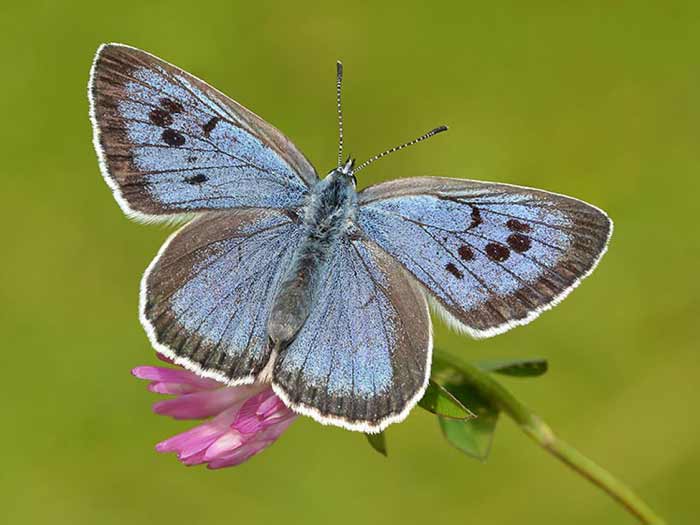
The Large Blue Butterfly has a unique, intricate pattern of black spots on its blue wings. It’s one of the UK’s largest indigenous butterflies, with a wingspan reaching 2 inches. They prefer grasslands rich in wild thyme.
Fact: This species was declared extinct in the UK in 1979 but has since been reintroduced in a successful conservation effort.
13. Short-Tailed Blue Butterfly
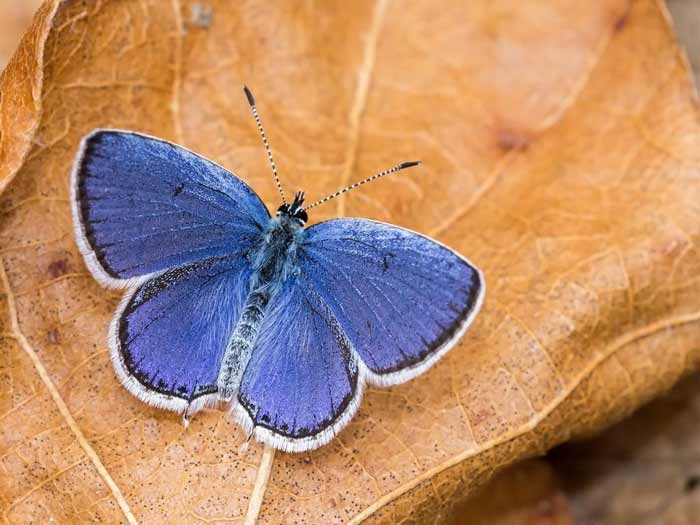
The Short-Tailed Blue Butterfly is small, with a wingspan of 1 to 1.2 inches, and has a distinctive short tail-like structure on its hindwings. Found in Europe and Asia, they inhabit grasslands and open woodland.
Fact: They have a rapid, low flight and are often seen resting with their wings closed, exposing the beautifully patterned undersides.
14. Long-Tailed Blue Butterfly

The Long-Tailed Blue Butterfly is notable for the long, tail-like structures on its hindwings. With a wingspan of about 1.4 inches, they are found in Europe, Africa, and Asia, frequenting gardens, meadows, and open fields.
Fact: This species is known for its migratory capabilities, sometimes traveling long distances and temporarily colonizing new areas.
15. Pea Blue Butterfly
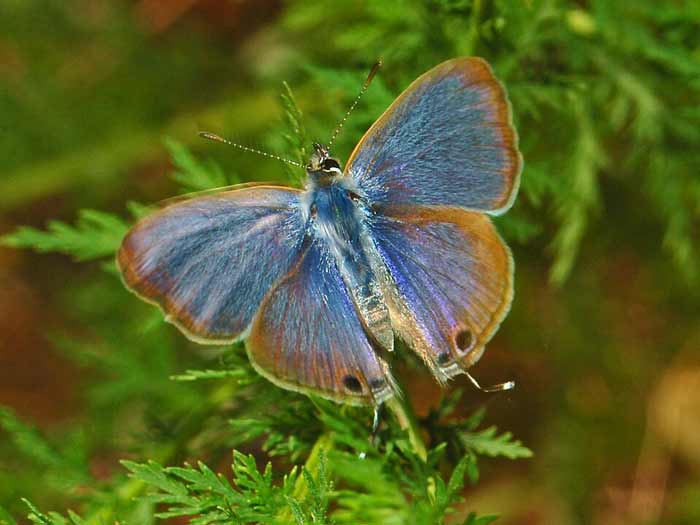
The Pea Blue Butterfly, also known as the “Pea-pod Argus,” has vibrant blue wings and a small stature, with a wingspan just over an inch. They are widespread in Australia and Asia, often spotted in urban areas and open grasslands.
Fact: True to its name, the larvae of the Pea Blue feed on the flowers and pods of pea plants, and the adults have a particular fondness for legume nectar.
Conclusion
Blue butterflies are more than a delightful spectacle; they are a testament to nature’s artistic prowess and adaptability. Each species contributes uniquely to the biodiversity of its habitat, playing vital roles in maintaining the ecological balance.
Their captivating hues are not just for our viewing pleasure; they serve critical functions in their survival, from warding off predators to attracting mates. As we revel in their beauty, it’s crucial to remember our role in their conservation. Protecting these cerulean wonders is preserving the natural artistry that they represent.
FAQs
Yes, blue butterflies are real and belong to the Lycaenidae family. They are known for their vibrant colors and striking patterns.
The blue color in their wings is due to structural coloration, not pigments. Microscopic structures on their wings reflect light, creating an iridescent blue hue.
Notable species include the Blue Morpho, Karner Blue, Common Blue, Eastern Tailed-Blue, Holly Blue, Adonis Blue, and Zebra Blue Butterflies.
